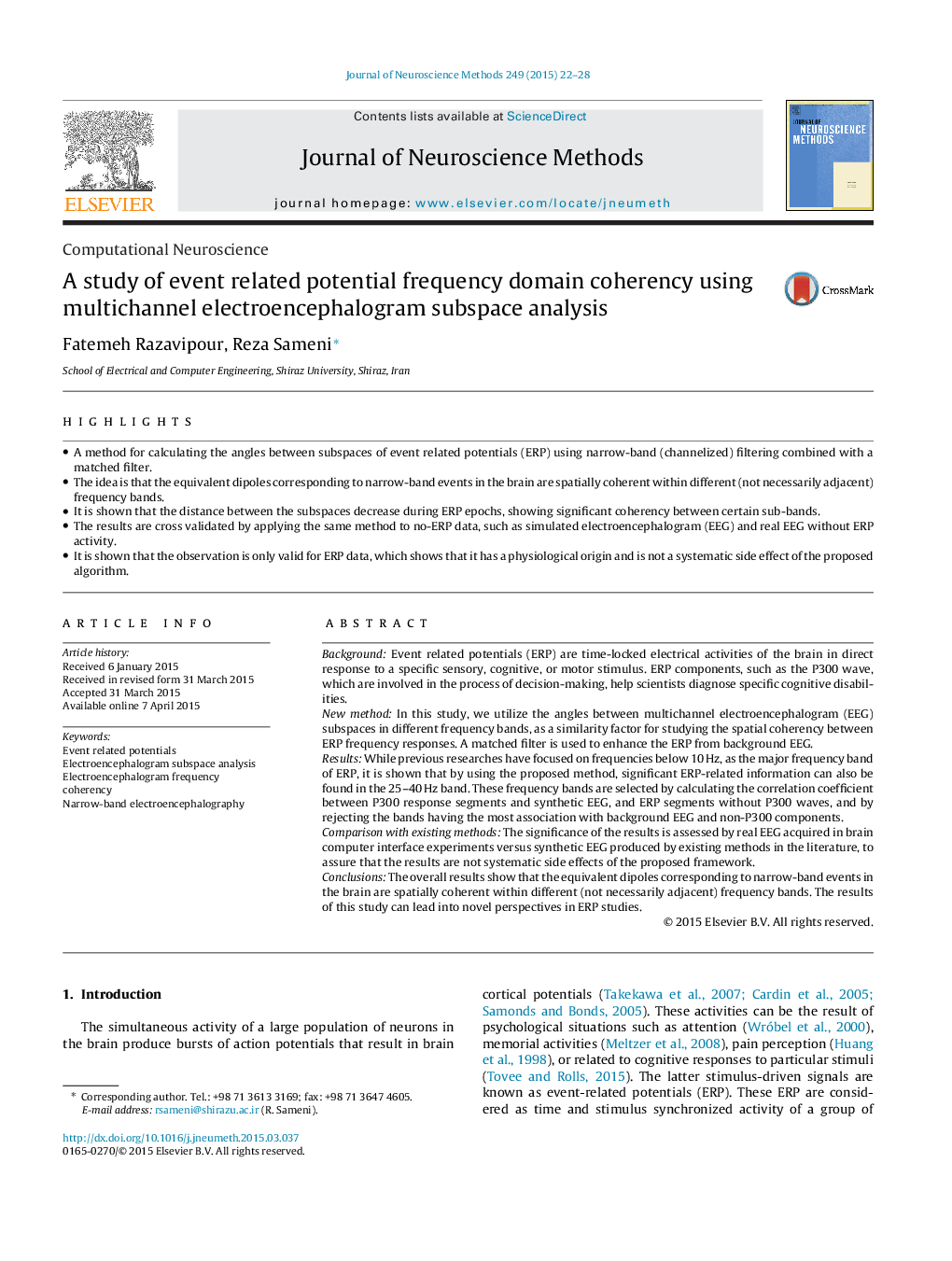| کد مقاله | کد نشریه | سال انتشار | مقاله انگلیسی | نسخه تمام متن |
|---|---|---|---|---|
| 6268224 | 1614620 | 2015 | 7 صفحه PDF | دانلود رایگان |
- A method for calculating the angles between subspaces of event related potentials (ERP) using narrow-band (channelized) filtering combined with a matched filter.
- The idea is that the equivalent dipoles corresponding to narrow-band events in the brain are spatially coherent within different (not necessarily adjacent) frequency bands.
- It is shown that the distance between the subspaces decrease during ERP epochs, showing significant coherency between certain sub-bands.
- The results are cross validated by applying the same method to no-ERP data, such as simulated electroencephalogram (EEG) and real EEG without ERP activity.
- It is shown that the observation is only valid for ERP data, which shows that it has a physiological origin and is not a systematic side effect of the proposed algorithm.
BackgroundEvent related potentials (ERP) are time-locked electrical activities of the brain in direct response to a specific sensory, cognitive, or motor stimulus. ERP components, such as the P300 wave, which are involved in the process of decision-making, help scientists diagnose specific cognitive disabilities.New methodIn this study, we utilize the angles between multichannel electroencephalogram (EEG) subspaces in different frequency bands, as a similarity factor for studying the spatial coherency between ERP frequency responses. A matched filter is used to enhance the ERP from background EEG.ResultsWhile previous researches have focused on frequencies below 10Â Hz, as the major frequency band of ERP, it is shown that by using the proposed method, significant ERP-related information can also be found in the 25-40Â Hz band. These frequency bands are selected by calculating the correlation coefficient between P300 response segments and synthetic EEG, and ERP segments without P300 waves, and by rejecting the bands having the most association with background EEG and non-P300 components.Comparison with existing methodsThe significance of the results is assessed by real EEG acquired in brain computer interface experiments versus synthetic EEG produced by existing methods in the literature, to assure that the results are not systematic side effects of the proposed framework.ConclusionsThe overall results show that the equivalent dipoles corresponding to narrow-band events in the brain are spatially coherent within different (not necessarily adjacent) frequency bands. The results of this study can lead into novel perspectives in ERP studies.
Journal: Journal of Neuroscience Methods - Volume 249, 15 July 2015, Pages 22-28
